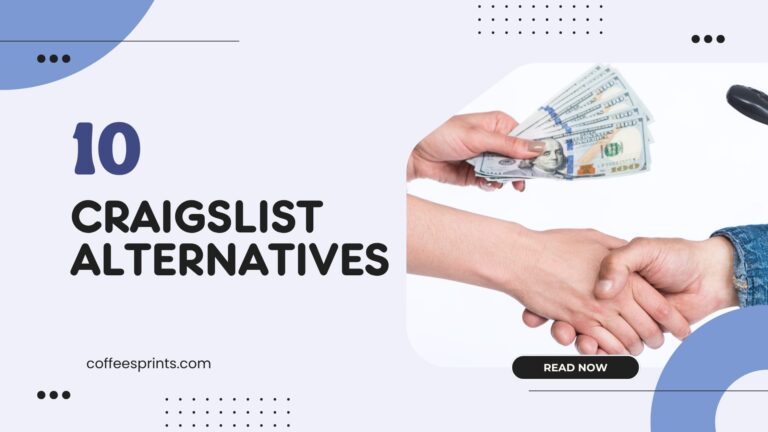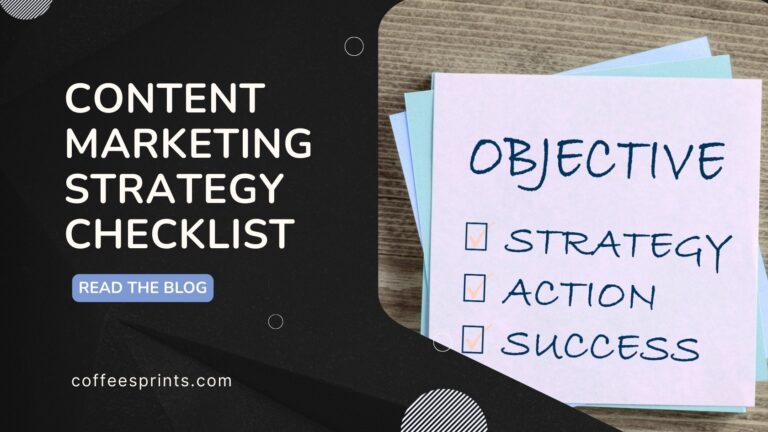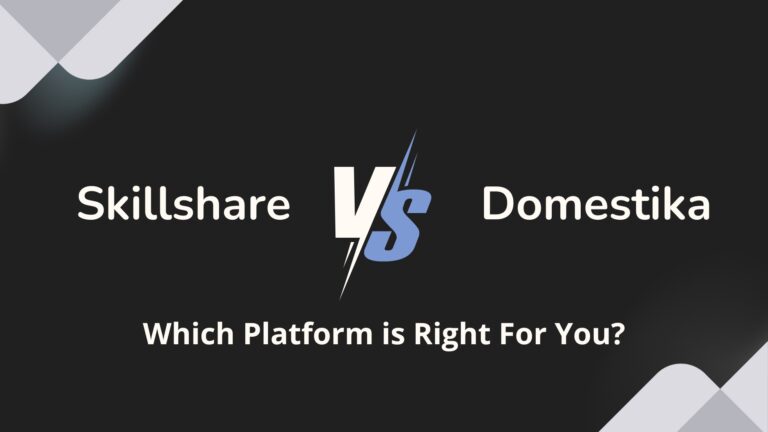15 Best Redbubble Alternatives: Websites for Print-on-Demand Products
Redbubble has been one of the go-to print-on-demand platforms for many creators, but there’s a whole world of alternatives that might actually be a better fit depending on prices, fees, target audience, and overall sales.
In this comprehensive guide, I will walk you through the top 15 Redbubble alternatives on the market today, along with the criteria for choosing the right one.
How to Choose the Right Print-on-Demand Platform
To make the choice, consider these factors in your next print-on-demand platform:

Product Portfolio: What is it that you want to expand into? Different platforms specialize in different products. Some excel at apparel, while others might focus on home decor, accessories, or wall art. Choose a platform that offers the specific products you want to sell.
Pricing and Profit Margins: This is an important metric of your print-on-demand business if you’re starting to look at your hobby as an actual business.
Commission structures vary widely across platforms. Some take a percentage of each sale, while others allow you to set your own markups. Calculate your potential earnings on each platform before committing.
Quality Control: Your reputation as an artist/brand depends on the quality of the products delivered to customers. Research customer reviews about product quality and consistency for each platform.
Marketing Tools: Do you want to drive traffic to your own store or let the platform find your audience? Some platforms actively promote your work through their marketplaces, while others expect you to drive your own traffic. Consider how much marketing support you need.
Ease of Use: You should try opting for user-friendly interfaces and straightforward upload processes, saving you significant time, especially if you plan to list hundreds of designs.
Payment Terms: While it may not be a dealbreaker, you should know how the platform pays the creators like you, so it aligns with your expectations. Some offer monthly payments, others pay per sale, and minimum payout thresholds can vary.
My suggestion? Finding the perfect Redbubble alternative depends on your specific needs from the list I mentioned above. But the truth is, there’s no one-size-fits-all!
Try TeePublic, Society6, or Zazzle if you’re just starting out and want the simplest approach. These platforms handle everything from production to customer service, allowing you to focus solely on creating designs.
If you already have an audience, want complete control over your brand, or intend to build one, integrate POD platforms like Gelato and Printful with your own store. Yes, there’s more work involved in driving traffic, but you’ll keep a larger share of the profits and build a business asset that truly belongs to you.
Now, let’s explore the top alternatives to Redbubble for your print-on-demand business.
Top 15 Redbubble Alternatives for Print-on-Demand Products
1. Zazzle
Zazzle is one of the most established print-on-demand marketplaces, similar to Redbubble, known for its extensive product range and customization options. Founded in 2005, it offers over 1,300 different product types for creators to showcase their designs.
Pricing and Fee Structure:
You can set your own royalty rate on Zazzle, typically between 5% and 99% of your product’s sale price. However, higher royalties mean higher customer prices, which can affect your sales volume. Zazzle also offers volume discounts to customers and runs frequent promotions, which can impact your earnings.
Benefits:
- Complete control over your royalty rates
- Massive product catalog with extensive customization options
- Strong built-in marketplace with an established customer base
- Referral program that earns you additional commission on sales you generate
- Design tools that allow for design placement optimization
Potential Drawbacks:
- If you’re a beginner, you might feel a bit overwhelmed due to its extensive options
- Competition is fierce, with millions of products on the platform
- Customer discounts and promotions can reduce your earnings
- Some creators report slower payment processing compared to other platforms
2. Sellfy
Sellfy offers a different approach to print-on-demand, focusing on helping you create your own branded storefront rather than selling through a marketplace. This gives you more control over your brand identity and customer relationships.
Pricing and Fee Structure:
Sellfy operates on a subscription model starting at $19/month for the Starter plan, with higher tiers offering more features. Unlike marketplace models, you keep all your profits after the production and subscription costs.
Benefits:
- You can create your own brand store with a custom domain
- No commission fees on sales (just the monthly subscription)
- Built-in marketing tools like email marketing and cart abandonment recovery
- Flexibility to sell digital products alongside print-on-demand items
- Mobile-optimized storefronts with minimal setup requiredgu
Potential Drawbacks:
- You’re responsible for driving traffic to your store
- The product range is slightly limited compared to some of its competitors
3. Fine Art America (FAA)
Fine Art America specializes in high-quality art prints and home decor products, making it particularly appealing to photographers, painters, and fine artists. It’s one of the world’s largest art marketplaces with over 500,000 artists and photographers.
Pricing and Fee Structure:
FAA uses a base price + markup model. They charge a base price for manufacturing and fulfillment, and you add your markup, which becomes your profit. For example, a basic paper print might have a $10 base price, and you could add a $20 markup, making your profit $20 per sale. Premium membership is available for $30/year, offering additional features and reduced base prices.
Benefits:
- Focus on high-quality art reproduction
- Global production facilities for faster shipping worldwide
- Options for selling originals alongside prints
- Robust artist profile pages that showcase your portfolio professionally
- Regular art challenges and featured artist promotions
Potential Drawbacks:
- More specialized audience than general merchandise platforms
- Higher base prices than some competitors due to focus on quality
- Limited apparel and accessory options compared to dedicated merchandise platforms
- Most effective for artists with well-established styles or collections
4. Gelato
Gelato takes a different approach by focusing on global production and fulfillment capabilities. With over 100 production centers across 30 countries, Gelato allows you to sell locally while producing products close to your customers.
Pricing and Fee Structure:
Gelato offers both integration with your own store (Shopify, Etsy, WooCommerce) and Gelato Marketplace. For your own store integrations, you pay production costs plus a monthly fee starting at $19/month. In the marketplace model, you set your markup on top of production costs.
Benefits:
- Local production reduces shipping times and costs
- Environmentally friendly approach with reduced shipping distances
- Integration with major e-commerce platforms
- High-quality print standards across global network
- Excellent for businesses with international customer base
Potential Drawbacks:
- More complex setup than simple marketplace platforms
- Steeper learning curve for beginners
- More focused on integration than offering a standalone marketplace
5. TeePublic
TeePublic started as a t-shirt-focused platform but has expanded to offer over 70 products, including apparel, home decor, and accessories. It’s known for its clean, user-friendly interface and strong community of independent artists.
Pricing and Fee Structure:
TeePublic operates on a fixed royalty system. For t-shirts, you earn a flat $4 per sale at regular price and $2 during sales (which happen frequently). Other products have different fixed royalty amounts. This simplified approach means you always know exactly what you’ll earn per item.
Benefits:
- Simple, transparent royalty structure
- Regular site-wide sales that can boost your volume
- Strong focus on artist community and promotion
- Clean, attractive storefronts that showcase your work effectively
- Excellent print quality, particularly for apparel
Potential Drawbacks:
- No ability to set your own prices or adjust margins
- Frequent sales can reduce your per-item earnings
- More limited product range than some competitors
- The primary market is U.S.-based, with less international presence
Recommended Read:The Best Websites to Sell Art Online
6. Printful
Printful is one of the most popular print-on-demand services for integration with your own online store. It doesn’t offer a marketplace, but instead connects seamlessly with platforms like Shopify, Etsy, WooCommerce, and many others.
Pricing and Fee Structure:
Printful charges for production and fulfillment costs while allowing you to set your own retail prices. There’s no monthly fee for basic service, though they offer a premium plan with additional features for $49/month. You pay for products only when customers place orders.
Benefits:
- No upfront costs or inventory required
- Extensive product catalog with high-quality options
- Comprehensive integration with over 20 e-commerce platforms
- Advanced mockup generator with lifestyle images
- Branding options, including custom packaging and pack-ins
Potential Drawbacks:
- No built-in marketplace – you need to generate your own traffic
- Higher product base costs than some competitors
- Shipping can be expensive, especially internationally
- Steeper learning curve for complete beginners
7. Printify
Printify offers a network of print providers rather than handling production themselves. This gives you more options for balancing cost, quality, and location when fulfilling orders through your own store.
Pricing and Fee Structure:
Printify offers a free plan with unlimited product designs and up to 5 stores. Their Premium plan at $29/month gives you 20% off all products. You set your own retail prices on top of Printify’s production costs, which vary by print provider.
Benefits:
- Choose from multiple print providers for each product type
- Compare pricing and reviews before selecting suppliers
- Automatic order routing to the best provider
- Wide range of products, including some unique offerings
- Good integration with major e-commerce platforms
Potential Drawbacks:
- Quality can vary between different print providers
- No built-in marketplace – requires your own store
- Managing multiple print providers adds complexity
- Customer service can be challenging with the multi-provider model
Similar Read: Top 10 Printify Alternatives
8. CafePress
CafePress is one of the pioneers in the print-on-demand industry, operating since 1999. While its popularity has fluctuated over the years, it maintains a large customer base and offers a wide range of customizable products.
Pricing and Fee Structure:
CafePress uses a base price plus markup model. For the marketplace, CafePress sets the retail price, and you receive a royalty (typically 10% of the retail price). With a premium shop ($6.95/month), you can set your own prices and keep the markup over base cost.
Benefits:
- Established marketplace with existing customer traffic
- Simple setup process with quick design uploads
- Option to create both free and premium shops
- Regular promotions that can increase sales volume
- Long track record in the industry
Potential Drawbacks:
- Lower commission rates than many competitors
- User interface feels dated compared to newer platforms
- Limited control over product presentation
- Some creators report declining traffic in recent years
9. Society6
If you’re keen about artistic integrity and high-quality reproduction, Society6 might be right up your alley. This platform is a favorite among many professional artists and designers who want their work showcased beautifully on a wide range of home decor and lifestyle products.
Pricing and Fee Structure:
Here’s how it works at Society6: for art prints, you can set your own markup above the base price – giving you control over your earnings. For all other products, you’ll receive a flat 10% of the retail price. During promotions (which happen regularly), your royalty percentage stays the same, so your earnings may decrease during sales.
Benefits:
- Your work will be presented in a beautiful, gallery-like environment that attracts art enthusiasts
- You’ll be thrilled with their exceptional product quality, especially for art prints and home decor
- They offer some unique products you won’t find elsewhere, like credenzas and bar stools
- Their curator program can significantly boost your visibility if you get featured
- The community has a strong appreciation for original artwork and design
Potential Drawbacks:
- You might find the fixed 10% commission on most products rather limiting
- Getting discovered can be challenging as the marketplace is quite saturated
- Their promotions can cut into your earnings pretty significantly
- Some artists report that the upload and product creation process is time-consuming
10. Teespring (now Spring)
Recently rebranded as Spring, this platform has evolved far beyond its t-shirt roots. What makes Spring particularly interesting is its strong integration with social media platforms and content creator tools, making it perfect if you already have a following.
Pricing and Fee Structure:
You’re going to appreciate Spring’s approach to pricing – you set your own retail price on top of their base costs, keeping 100% of the profit margin you establish. Their base prices are competitive, and there are no monthly fees or setup costs to worry about.
Benefits:
- You’ll keep every cent of your markup – no commission sharing here!
- Their Twitch, YouTube, and social media integrations are absolutely fantastic for content creators
- They offer boosted commerce tools that let you create your own storefront
- Their product quality consistently gets positive reviews from customers
- You’ll find their design upload process incredibly quick and user-friendly
Potential Drawbacks:
- Keep in mind there’s no built-in marketplace, so you’ll need to drive your own traffic
- Their product catalog, while growing, isn’t as extensive as some competitors
- International shipping can get quite expensive for your customers
- Without an existing following, you might struggle to generate sales
11. Merch by Amazon
Let’s talk about Amazon Merch on Demand. This invite-only program lets you leverage Amazon’s massive customer base by adding your designs to their print-on-demand service. But you need to apply and get approved before you can actually sell designs on the marketplace. Once you apply, Amazon will evaluate it based on design quality and guidelines.
Pricing and Fee Structure:
Amazon uses a tiered royalty system based on product price points. For example, a standard t-shirt priced at $19.99 will earn you about $5.38 in royalties (roughly 27%). The higher you price your products (within Amazon’s limits), the higher percentage you’ll earn.
Benefits:
- You’re getting access to Amazon’s enormous customer base – that’s huge!
- Your products become eligible for Amazon Prime shipping, which customers love
- You’ll find their payment processing incredibly reliable and consistent
- Their tier system allows you to unlock more design slots as you make sales
- Being on Amazon means your designs appear in the world’s largest product search engine
Potential Drawbacks:
- Be prepared for a waiting period after applying – approval can take months
- Their content policies are quite strict, and designs can be rejected without a detailed explanation
- You’re limited in how many designs you can upload based on your tier level
- Product types are more limited than most platforms on this list
12. Displate
If you’re looking for something truly unique and exclusive for metal posters, Displate might be the perfect fit. Yes, you read that right! Your artwork is printed on high-quality metal sheets, creating durable and distinctive wall art that stands out from the crowd.
Pricing and Fee Structure:
With Displate, you’ll earn between 15% and 30% commission on each sale. The exact percentage depends on your artist level, which increases as you make more sales. On top of it, if you’re approved for their exclusive Displate Club program, you can earn up to 50% commission!
Benefits:
- Your art will be presented on truly unique, premium metal products that customers love
- Their magnetic mounting system makes your artwork easy to hang and rearrange
- They plant a tree for every Displate sold – how cool is that for eco-conscious artists?
- You’ll find their artist dashboard incredibly detailed and informative
- They have a strong European market presence, which can be great for global reach
Potential Drawbacks:
- Let’s be honest – having only one product type (metal posters) severely limits versatility
- Getting your work approved can be more challenging than on other platforms
- Their marketplace is curated, meaning not all submitted designs make it to the storefront
- The base price point is higher than paper prints, potentially limiting your audience
13. Print Aura
Print Aura takes a different approach by focusing on being a white-label fulfillment service rather than a marketplace. If you’re serious about building your own brand without the headaches of production and shipping, this might be perfect for you.
Pricing and Fee Structure:
There’s no monthly fee to use Print Aura – you simply pay for the base cost of products plus fulfillment when orders come in. You set your retail prices on your own store platform (like Etsy or Shopify), and the difference is your profit. They also offer volume discounts that kick in as your business grows.
Benefits:
- You’ll love their custom branding options – from neck labels to packaging
- Their integration with major e-commerce platforms is seamless and reliable
- They offer some of the most competitive base pricing in the industry
- You’ll find their print quality consistently high across products
- Their customer service gets rave reviews from store owners
Potential Drawbacks:
- Keep in mind there’s no built-in marketplace, so you need your own store and traffic
- Their product catalog is somewhat smaller than giants like Printful
- Their website and user interface feel a bit dated compared to newer services
- Processing times can be longer than some competitors during busy seasons
14. SunFrog
Ever heard of SunFrog? This platform might not be as widely recognized as some others on our list, but don’t let that fool you! SunFrog has built quite a following, especially for t-shirt designs and apparel that target specific niches and communities.
Pricing and Fee Structure:
When it comes to making money on SunFrog, you’ll earn a 15% commission on marketplace sales. But here’s where it gets interesting – if you’re driving your own traffic through affiliate links, that commission jumps up to a much more attractive 60%. If you’re good at marketing your own products, this could be a game-changer for your earnings.
Benefits:
- You’ll love their tiered commission structure that rewards you for bringing in your own customers
- They’ve got a surprisingly robust search engine that helps your designs get discovered
- Their platform makes it super easy to create designs targeting specific niches or trends
- They offer some neat tools for social sharing that can help your designs spread
- Their payment threshold is just $20, so you can cash out pretty quickly
Potential Drawbacks:
- I have to warn you that their marketplace isn’t as well-trafficked as giants like Redbubble
- Their product selection is a bit limited compared to some other options
- The site design feels a little dated and can be confusing to navigate at times
- Some artists report that the print quality can be inconsistent
15. Spreadshirt
Spreadshirt offers a flexible dual approach – you can sell through their marketplace or create your own shop within their platform. With a strong presence in both North America and Europe, they’ve been in the game since 2002.
Pricing and Fee Structure:
In the Spreadshirt marketplace, you’ll earn a 20% commission on each sale. If you set up your own Spreadshirt shop, you can add your own markup on top of the base price, potentially earning much more. They also offer a volume bonus program where you can earn additional percentage points as your sales increase.
Benefits:
- You’ll appreciate their dual approach – marketplace exposure plus your own custom shop
- Their product quality is top-notch, especially for apparel items
- They offer some unique specialty printing techniques like glitter and flock printing
- Their design tool is surprisingly powerful and intuitive
- You’ll find their European market presence particularly strong if you’re targeting that region
Potential Drawbacks:
- Their commission rate in the marketplace is lower than that of some competitors
- You might find their product creation process a bit more time-consuming
- The shop customization options are somewhat limited compared to having your own site
- Some artists report that the marketplace has become increasingly competitive
To sum it up!
Hope you found the perfect Redbubble alternative for your print-on-demand journey! Understand what is important to you, and your options are narrowed. And don’t forget – you’re not limited to just one platform! Many successful creators diversify their presence across multiple platforms, using them for different products and target audiences.
Also, never underestimate the power of your own brand! Happy selling!






